Self Watering Hanging Lettuce: Imagine fresh, crisp lettuce, bursting with flavor, hanging right outside your kitchen window, ready to be snipped and tossed into your salad. Sounds idyllic, right? Well, it’s more achievable than you think! Forget those expensive grocery store greens that wilt before you even get them home. This DIY project will show you how to create your very own self-watering hanging lettuce garden, bringing a touch of farm-to-table freshness directly to your doorstep.
Hanging gardens, in general, have a rich history, evoking images of the legendary Hanging Gardens of Babylon, one of the Seven Wonders of the Ancient World. While our project might be a bit more modest, the principle remains the same: maximizing space and bringing greenery into our lives in innovative ways. But why lettuce, and why self-watering? Well, lettuce is a relatively easy crop to grow, even for beginners, and a self-watering system takes the guesswork (and the daily chore!) out of watering, ensuring your lettuce stays consistently hydrated and thriving.
In today’s busy world, who has time to constantly monitor their plants? This self watering hanging lettuce system is perfect for busy individuals, apartment dwellers with limited space, or anyone who simply wants to enjoy fresh, homegrown lettuce without the hassle. I’m excited to share this simple yet effective DIY trick that will transform your space and your salads!
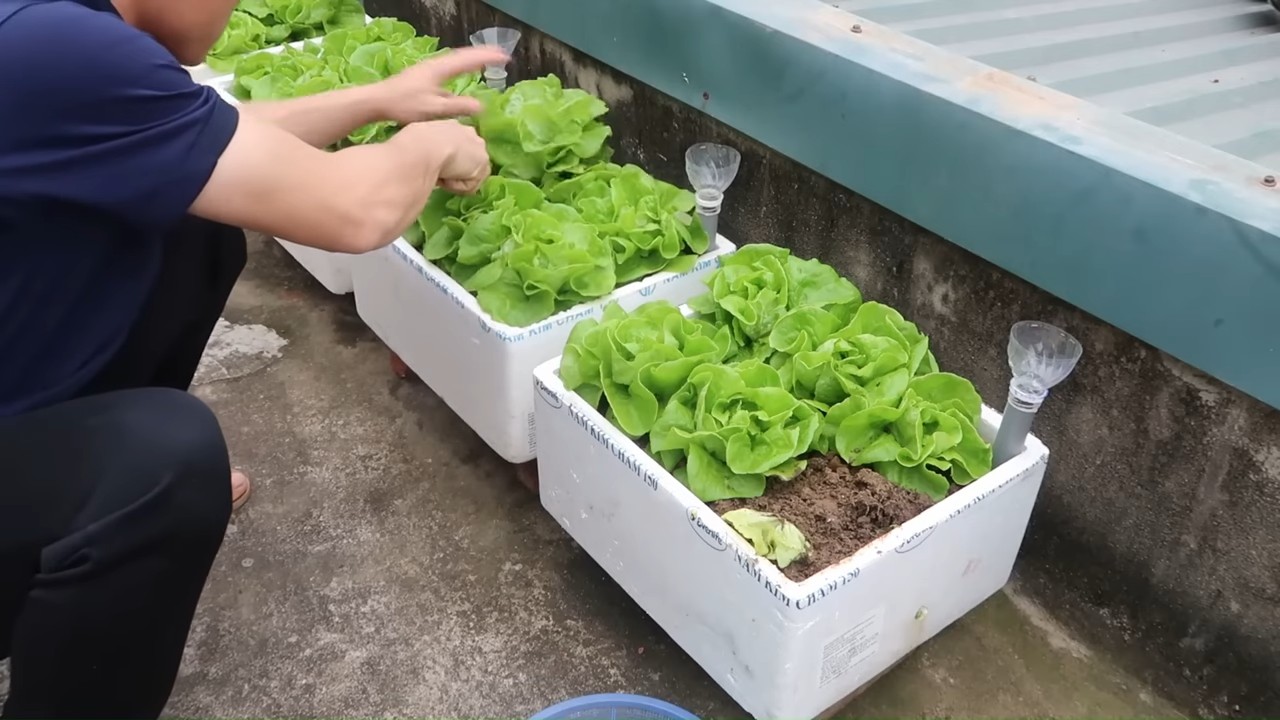
DIY Self-Watering Hanging Lettuce Planter: A Bountiful Salad at Eye Level!
Hey there, fellow gardening enthusiasts! Are you dreaming of fresh, crisp lettuce right outside your door, but short on space? Or maybe you’re just tired of bending over to tend your garden? Well, I’ve got the perfect solution for you: a DIY self-watering hanging lettuce planter! This project is not only incredibly rewarding, but it’s also surprisingly easy and budget-friendly. Get ready to enjoy a constant supply of delicious, homegrown lettuce with minimal effort.
What You’ll Need: The Supply List
Before we dive in, let’s gather our supplies. Don’t worry, you probably have some of these lying around already!
* Two Plastic Buckets (5-gallon size recommended): One will be the outer container, and the other will be the inner planting container. Make sure they can nest inside each other with a few inches of space between them.
* Drill with various sized drill bits: For drainage, wicking holes, and hanging holes.
* Utility Knife or Heavy-Duty Scissors: For cutting the PVC pipe and making adjustments to the buckets.
* PVC Pipe (approximately 12-18 inches long, 1-2 inch diameter): This will act as our water reservoir fill tube.
* Wicking Material (cotton rope, strips of old t-shirt, or felt): This is crucial for drawing water up to the soil.
* Potting Mix: Choose a high-quality potting mix that retains moisture well.
* Lettuce Seedlings or Seeds: Pick your favorite varieties! I personally love a mix of romaine, butterhead, and red leaf lettuce.
* Measuring Tape or Ruler: For accurate measurements.
* Permanent Marker: For marking drill points.
* Hanging Chain or Rope: To suspend your beautiful lettuce planter.
* Optional: Landscape Fabric or Burlap: To line the inner bucket and prevent soil from escaping.
* Optional: Decorative Paint or Embellishments: To personalize your planter!
Step-by-Step Instructions: Building Your Hanging Lettuce Oasis
Alright, let’s get our hands dirty! Follow these steps carefully, and you’ll have your self-watering hanging lettuce planter ready in no time.
1. Prepare the Outer Bucket (Water Reservoir):
* First, we need to create drainage holes in the bottom of the outer bucket. This is important to prevent the reservoir from overflowing during heavy rain. Using a 1/4-inch drill bit, drill 4-6 holes evenly spaced around the bottom of the bucket.
* Next, we’ll drill a hole for the PVC fill tube. Choose a spot near the edge of the bucket, about 2-3 inches from the top. Use a drill bit that’s slightly larger than the diameter of your PVC pipe. This will allow the pipe to slide in easily.
* Now, let’s create the hanging points. Measure and mark three or four evenly spaced points around the top rim of the bucket. Use a drill bit that’s large enough to accommodate your hanging chain or rope. Drill the holes carefully.
2. Prepare the Inner Bucket (Planting Container):
* This bucket will hold our lettuce and potting mix. We need to create holes for the wicking material and drainage.
* Start by drilling 4-6 drainage holes in the bottom of the inner bucket, using a 1/4-inch drill bit.
* Now, for the wicking holes. These are crucial for the self-watering system to work. Drill 2-3 holes near the bottom of the bucket, about 1-2 inches from the base. The size of the holes should be large enough to accommodate your wicking material. I usually use a 3/8-inch drill bit for cotton rope.
* Optional: If you’re using landscape fabric or burlap, line the inside of the inner bucket to prevent soil from escaping through the drainage holes. Secure it with staples or glue if needed.
3. Install the Wicking System:
* Cut your wicking material into lengths that are long enough to reach from the bottom of the inner bucket, through the wicking holes, and down into the water reservoir in the outer bucket. You’ll want at least 6-8 inches of wicking material extending into the reservoir.
* Thread the wicking material through the wicking holes, ensuring that a significant portion of the material hangs down below the bucket.
4. Assemble the Planter:
* Carefully nest the inner bucket inside the outer bucket. The bottom of the inner bucket should be a few inches above the bottom of the outer bucket, creating the water reservoir.
* Insert the PVC pipe into the hole you drilled in the outer bucket. This will be your fill tube for adding water to the reservoir. Make sure the pipe extends down into the reservoir but doesn’t touch the bottom.
5. Add Potting Mix and Plant Your Lettuce:
* Fill the inner bucket with your chosen potting mix, leaving about an inch or two of space at the top.
* If you’re using lettuce seedlings, gently transplant them into the potting mix, spacing them according to the variety’s recommendations. If you’re using seeds, sow them according to the seed packet instructions.
* Water the potting mix thoroughly after planting. This will help settle the soil and encourage the wicking system to start working.
6. Hang Your Lettuce Planter:
* Attach your hanging chain or rope to the holes you drilled in the outer bucket. Make sure the chain or rope is strong enough to support the weight of the planter when it’s full of soil and water.
* Find a sunny spot to hang your planter. Lettuce needs at least 4-6 hours of sunlight per day.
7. Watering and Maintenance:
* Initially, you’ll need to water the potting mix from the top until the wicking system is fully established.
* After a few days, you can start filling the water reservoir through the PVC fill tube. Check the reservoir level regularly and refill as needed. The wicking system will draw water up to the soil, keeping it consistently moist.
* Fertilize your lettuce regularly with a balanced liquid fertilizer, following the instructions on the fertilizer package.
* Harvest your lettuce leaves as needed, starting with the outer leaves. This will encourage the plant to produce more leaves.
Troubleshooting Tips: Keeping Your Lettuce Happy
Even with the best planning, sometimes things don’t go exactly as expected. Here are a few common issues and how to address them:
* Lettuce Wilting: This could be due to several factors. First, check the water reservoir to make sure it’s full. If the reservoir is full, the wicking system might not be working properly. Make sure the wicking material is making good contact with the water and the soil. You might need to add more wicking material or adjust its placement. Also, ensure your lettuce is getting enough sunlight but not scorched by intense heat.
* Yellowing Leaves: This could indicate a nutrient deficiency. Fertilize your lettuce with a balanced liquid fertilizer. It could also be a sign of overwatering, though this is less likely with a self-watering system. Make sure the drainage holes are clear and that the potting mix isn’t waterlogged.
* Pests: Keep an eye out for common lettuce pests like aphids, slugs, and snails. Inspect your plants regularly and take action if you see any signs of infestation. You can use organic pest control methods like insecticidal soap or diatomaceous earth.
* Slow Growth: Lettuce needs adequate sunlight and nutrients to thrive. Make sure your planter is in a sunny location and that you’re fertilizing regularly. Also, check the pH of your potting mix. Lettuce prefers a slightly acidic pH of around 6.0 to 6.5.
Choosing the Right Lettuce Varieties: A Salad for Every Palate
One of the best things about growing your own lettuce is the ability to choose your favorite varieties. Here are a few popular options to get you started:
* Romaine: This is a classic choice for salads and sandwiches. It has a crisp texture and a slightly bitter flavor.
* Butterhead: Also known as Boston lettuce, this variety has soft, buttery leaves and a mild flavor.
* Red Leaf: This lettuce adds a pop of color to your salads. It has a slightly sweet and nutty flavor.
* Loose Leaf: This type of lettuce doesn’t form a head, making it easy to harvest individual leaves as needed. It comes in a variety of colors and flavors.
* Mesclun Mix: This is a blend of different lettuce varieties, offering a diverse range of flavors and textures.
Personalizing Your Planter: Make It Your Own!
Now that you’ve built your self-watering hanging lettuce planter, it’s time to add your personal touch! Here are a
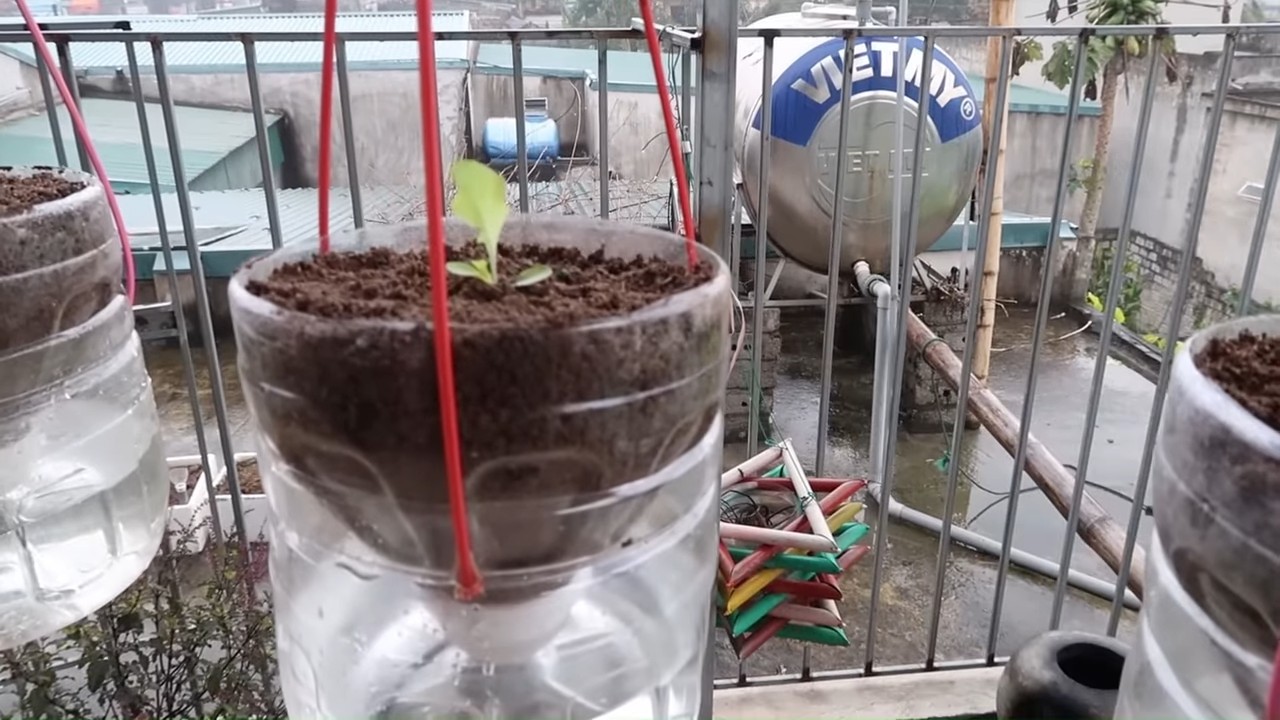
Conclusion
So, there you have it! Creating your own self-watering hanging lettuce planter is not just a fun weekend project; it’s a game-changer for anyone who loves fresh, homegrown greens but struggles with space or time. We’ve walked you through the simple steps, highlighting how easy it is to repurpose materials and create a thriving vertical garden.
But why is this DIY trick a must-try? Let’s recap. First, it’s incredibly space-efficient. If you’re living in an apartment, have a small balcony, or simply want to maximize your garden’s yield, hanging lettuce planters are the answer. They allow you to grow a substantial amount of lettuce in a minimal footprint. Second, the self-watering aspect significantly reduces the amount of time you need to spend watering. The reservoir at the bottom provides a consistent supply of moisture to the roots, preventing the lettuce from drying out and minimizing the risk of overwatering. This is especially beneficial during hot summer months or if you’re prone to forgetting your watering duties. Third, it’s cost-effective. By using recycled materials like plastic bottles or buckets, you’re saving money and reducing waste. The initial investment is minimal, and the long-term benefits of having fresh, organic lettuce at your fingertips are priceless.
Beyond the basic design, there are plenty of ways to customize your self-watering hanging lettuce planter. Consider adding different types of lettuce to your planter for a colorful and flavorful mix. Romaine, butterhead, and loose-leaf varieties all thrive in hanging planters. You can also experiment with companion planting. Herbs like basil, chives, and parsley can be planted alongside your lettuce to deter pests and enhance the flavor of your greens. Another variation is to use different types of containers. While plastic bottles are a popular choice, you can also use old buckets, hanging baskets, or even repurposed fabric planters. Just make sure the container is sturdy enough to hold the weight of the soil and water.
For those looking to take their self-watering system to the next level, consider adding a small solar-powered pump to circulate the water in the reservoir. This will help to prevent algae growth and ensure that the roots receive a consistent supply of oxygen. You can also add a layer of mulch to the top of the soil to help retain moisture and suppress weeds.
The key to success with this project is to choose the right location for your hanging planter. Lettuce needs at least six hours of sunlight per day, so make sure to hang your planter in a sunny spot. However, during the hottest part of the day, some shade may be necessary to prevent the lettuce from bolting (going to seed).
We are confident that you’ll find this DIY self-watering hanging lettuce project to be both rewarding and practical. It’s a simple, sustainable, and effective way to grow your own fresh lettuce, regardless of your gardening experience or available space. So, gather your materials, follow the steps outlined in this article, and get ready to enjoy a bountiful harvest of homegrown greens.
Don’t just take our word for it – try it yourself! We encourage you to experiment with different variations, share your experiences, and let us know what works best for you. Post pictures of your creations on social media using #SelfWateringLettuce and inspire others to join the movement of sustainable, homegrown gardening. Happy gardening!
Frequently Asked Questions (FAQ)
What type of lettuce grows best in a self-watering hanging planter?
Almost any type of lettuce can thrive in a self-watering hanging planter, but some varieties are particularly well-suited. Loose-leaf lettuces like Black Seeded Simpson, Red Sails, and Oakleaf are excellent choices because they are easy to harvest and continue to produce leaves throughout the growing season. Butterhead lettuces like Buttercrunch and Tom Thumb are also good options, as they form compact heads that fit well in hanging planters. Romaine lettuce can also be grown, but it may require a larger container to accommodate its upright growth habit. Experiment with different varieties to find your favorites!
How often do I need to refill the water reservoir?
The frequency with which you need to refill the water reservoir will depend on several factors, including the size of the reservoir, the type of lettuce you’re growing, the weather conditions, and the maturity of the plants. In general, you should check the water level every few days, especially during hot or dry weather. A good rule of thumb is to refill the reservoir when it is about halfway empty. Over time, you’ll get a feel for how quickly your lettuce plants are using water and can adjust your watering schedule accordingly.
What type of soil should I use for my self-watering hanging lettuce planter?
The best type of soil for a self-watering hanging lettuce planter is a well-draining potting mix that is rich in organic matter. Avoid using garden soil, as it can be too heavy and compact, which can lead to poor drainage and root rot. A good potting mix will provide the necessary nutrients for healthy lettuce growth and will also retain moisture without becoming waterlogged. You can also amend your potting mix with compost or other organic materials to further improve its fertility and drainage.
How much sunlight does my self-watering hanging lettuce planter need?
Lettuce needs at least six hours of sunlight per day to thrive. However, during the hottest part of the day, some shade may be necessary to prevent the lettuce from bolting (going to seed). If you live in a hot climate, consider hanging your planter in a location that receives morning sun and afternoon shade. You can also use shade cloth to protect your lettuce from the intense midday sun.
How do I prevent pests from attacking my lettuce?
Pests can be a common problem for lettuce growers, but there are several things you can do to prevent them from attacking your plants. One of the most effective methods is to inspect your lettuce plants regularly for signs of pests, such as aphids, slugs, and snails. If you find any pests, you can remove them by hand or spray your plants with an organic insecticide, such as neem oil or insecticidal soap. You can also use companion planting to deter pests. For example, planting basil or chives near your lettuce can help to repel aphids and other insects.
How do I harvest my lettuce?
Harvesting lettuce from a self-watering hanging planter is easy. For loose-leaf lettuces, simply snip off the outer leaves as needed, leaving the inner leaves to continue growing. For butterhead and romaine lettuces, you can harvest the entire head when it is mature. To harvest the entire head, cut it off at the base of the plant with a sharp knife.
Can I grow other vegetables in a self-watering hanging planter?
While this article focuses on growing lettuce, you can certainly grow other vegetables in a self-watering hanging planter. Herbs like basil, parsley, and chives are excellent choices, as they have similar growing requirements to lettuce. You can also grow smaller vegetables like strawberries, cherry tomatoes, and peppers in hanging planters. Just make sure to choose a container that is large enough to accommodate the mature size of the plants.
How do I overwinter my self-watering hanging lettuce planter?
Lettuce is a cool-season crop and can tolerate light frosts. However, if you live in an area with harsh winters, you will need to take steps to protect your lettuce plants from freezing temperatures. One option is to move your hanging planter indoors to a sunny location. You can also cover your planter with a frost blanket or plastic sheeting to protect it from frost. If you choose to leave your planter outdoors, make sure to water it regularly, even during the winter months.
What are the benefits of using a self-watering system?
Self-watering systems offer several benefits for lettuce growers. They provide a consistent supply of moisture to the roots, which helps to prevent the lettuce from drying out and minimizes the risk of overwatering. They also reduce the amount of time you need to spend watering, which is especially beneficial during hot summer months or if you’re prone to forgetting your watering duties. Additionally, self-watering systems can help to conserve water, as they reduce water loss through evaporation.
How do I clean my self-watering hanging lettuce planter?
It’s important to clean your self-watering hanging lettuce planter regularly to prevent the buildup of algae and bacteria. To clean your planter, empty the water reservoir and scrub it with a brush and soapy water. Rinse the reservoir thoroughly with clean water before refilling it. You should also clean the soil surface regularly to remove any dead leaves or debris.

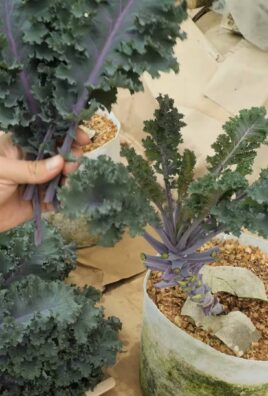
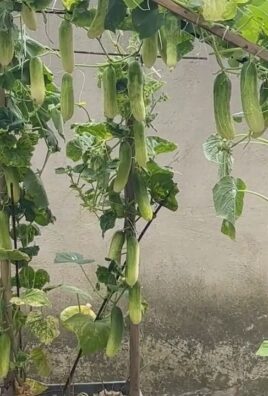
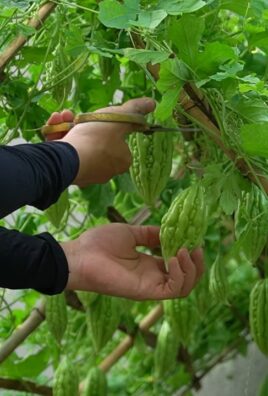
Leave a Comment